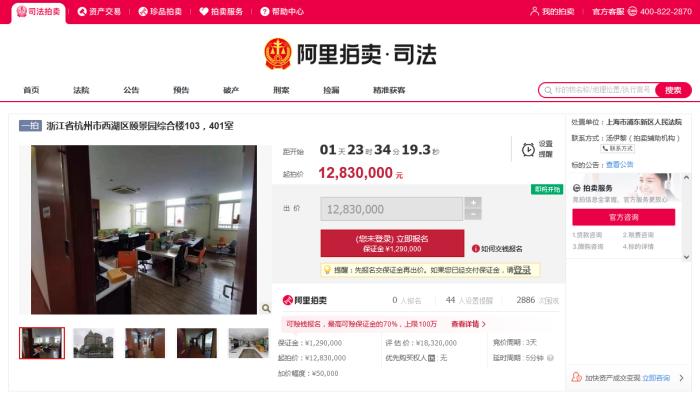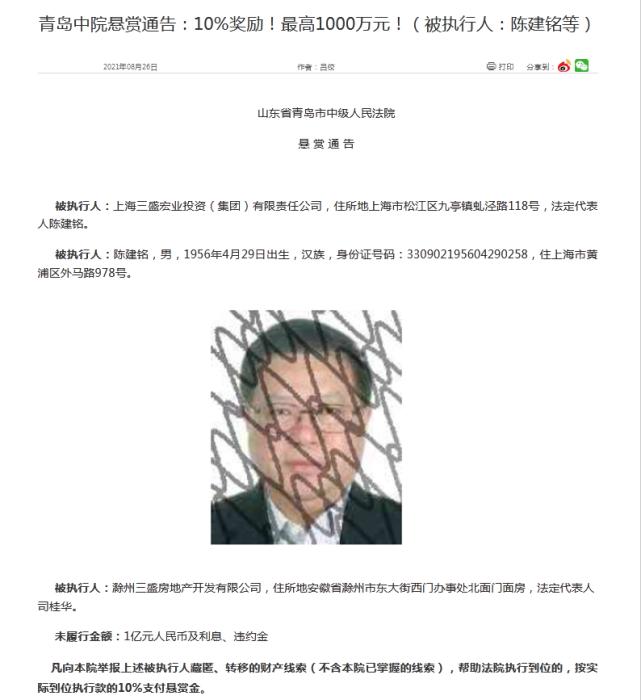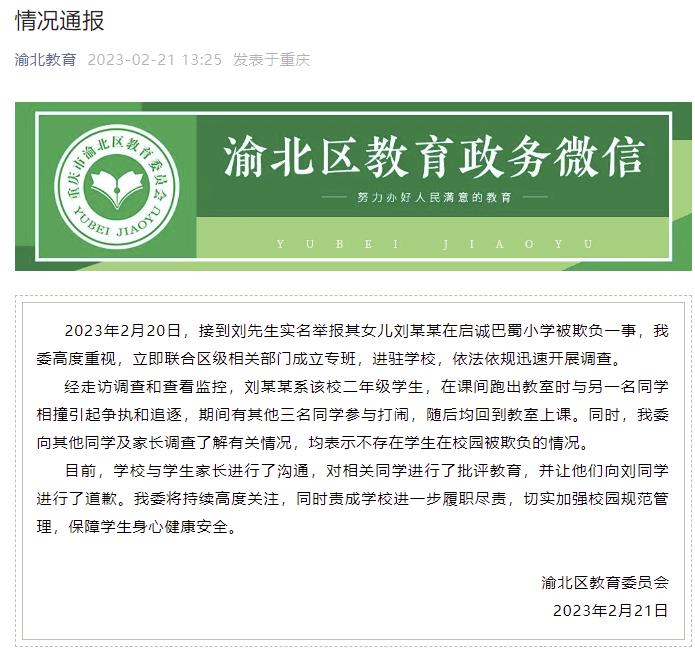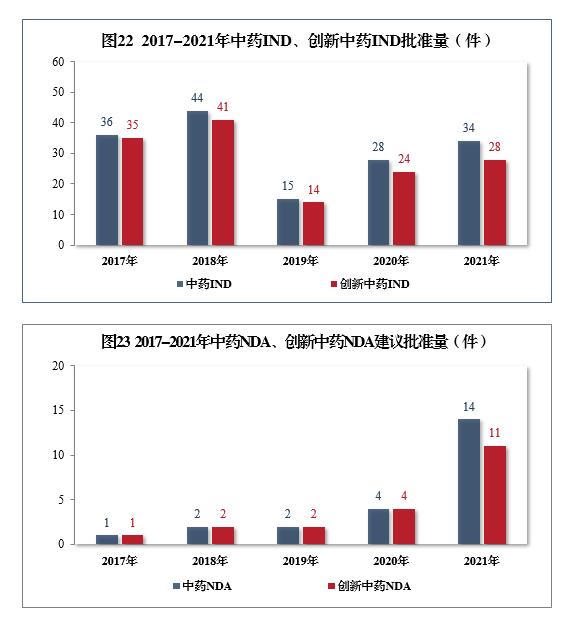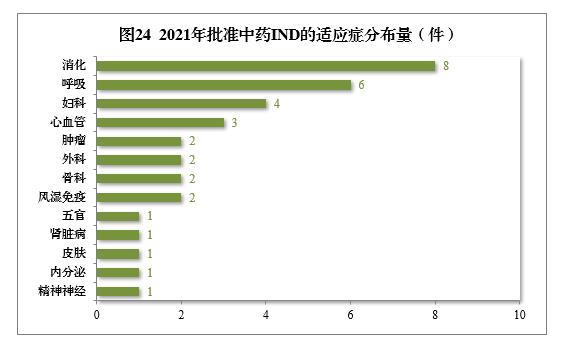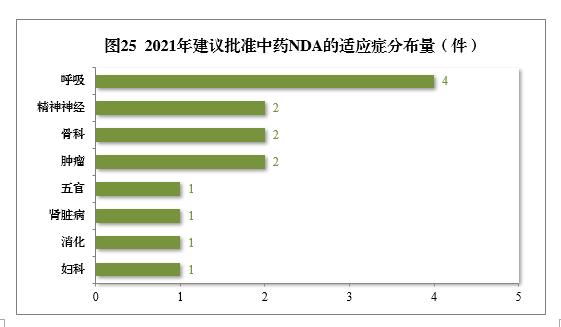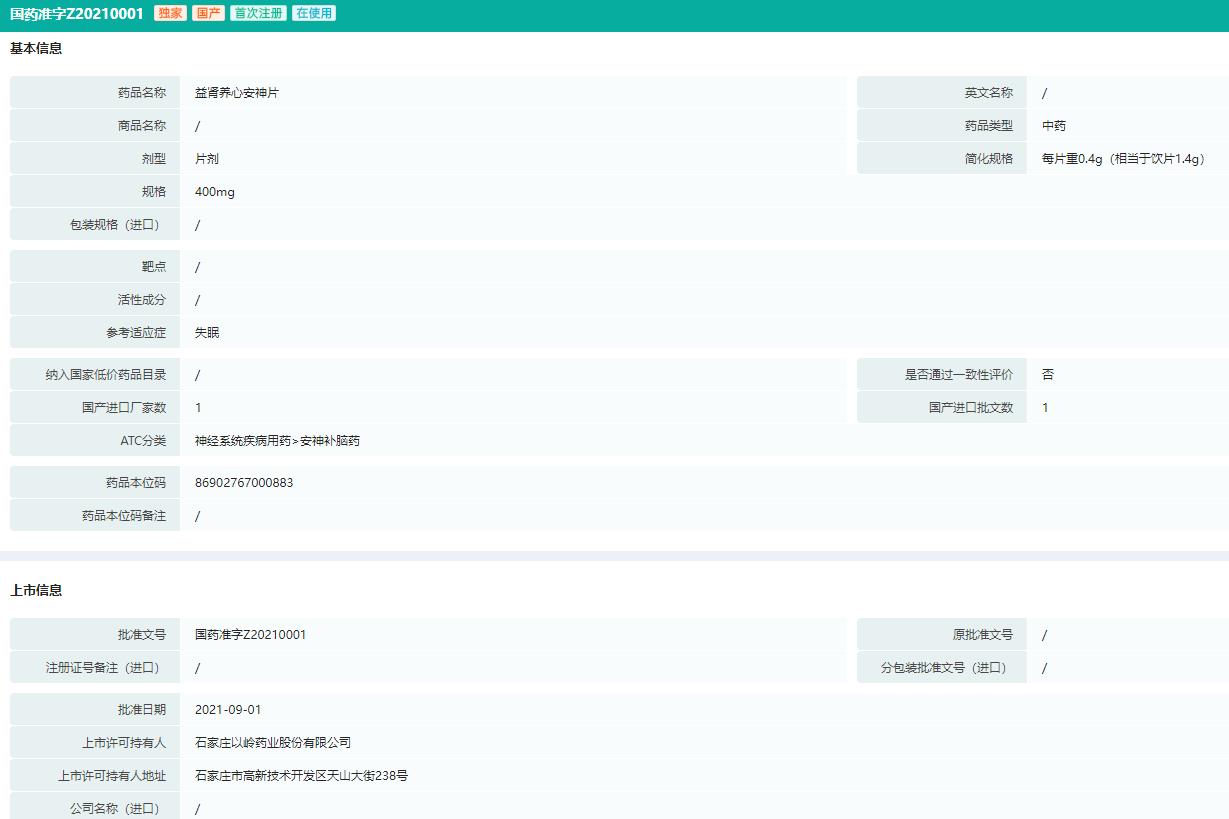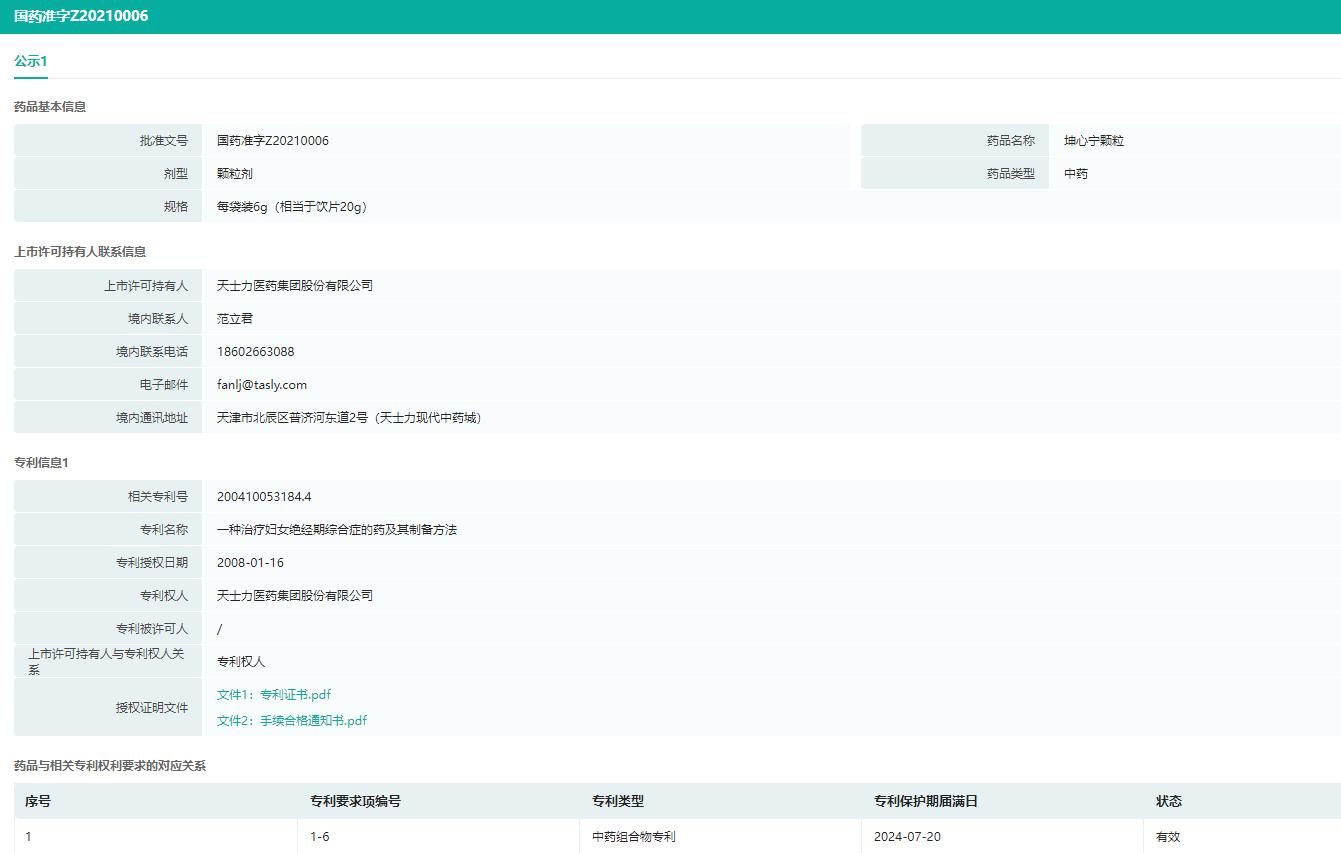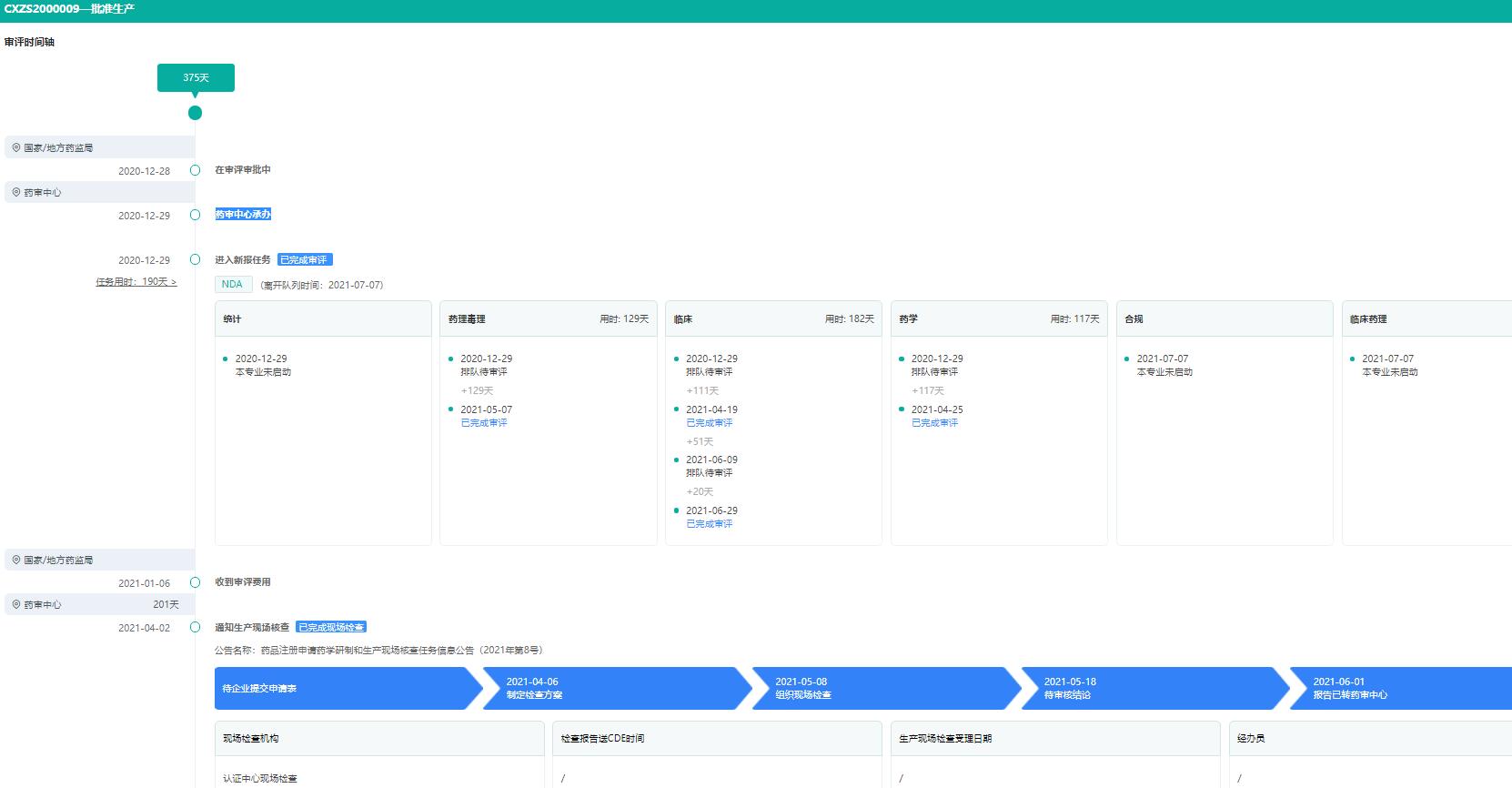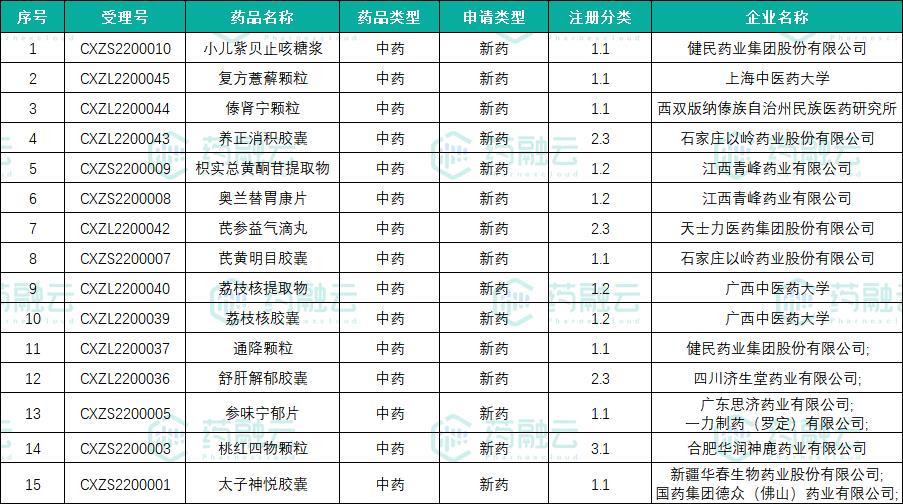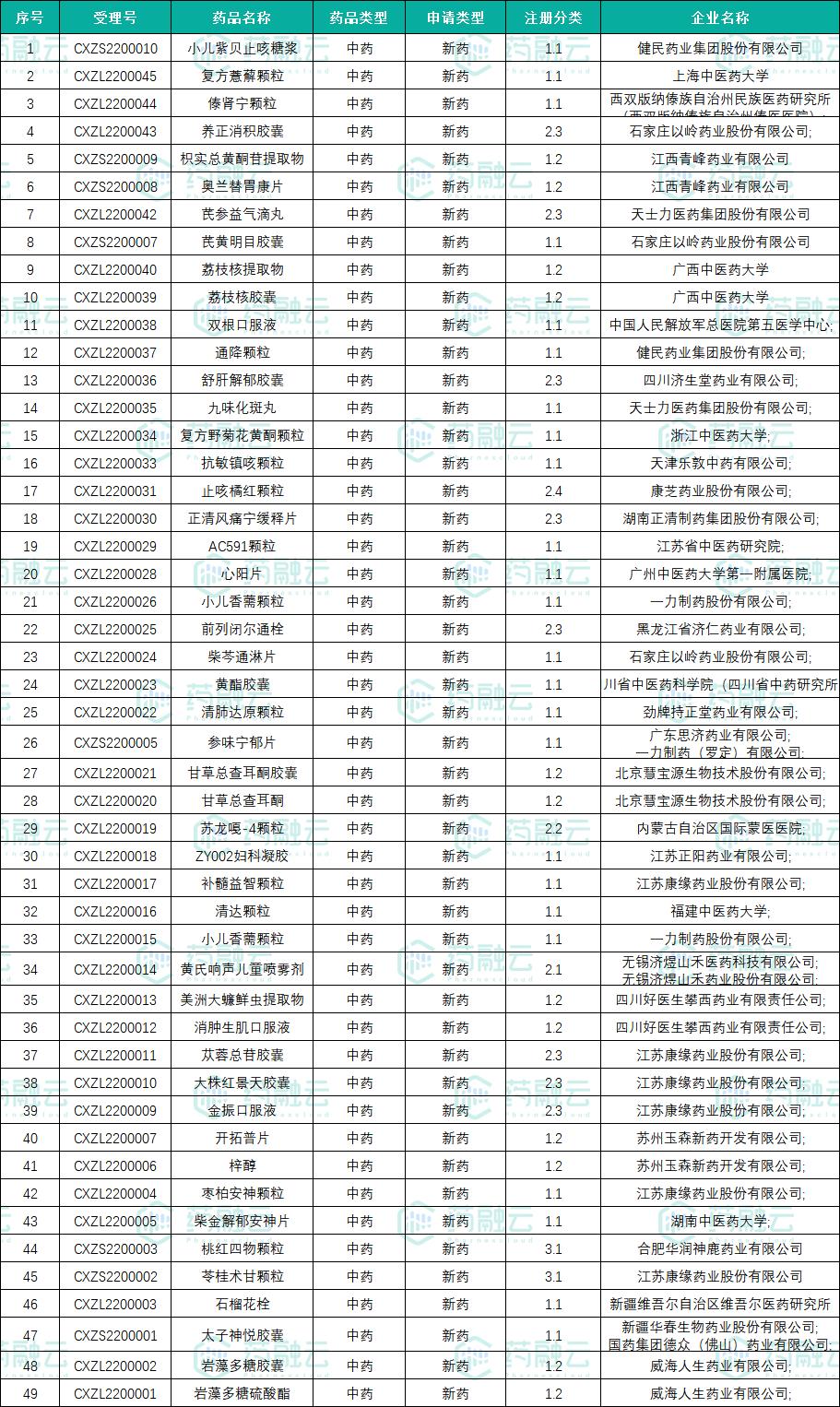People’s Republic of China (PRC) Military Facilities Protection Law
Xinhua News Agency, Beijing, June 10th
People’s Republic of China (PRC) Military Facilities Protection Law
(Adopted at the 12th meeting of the 7th the NPC Standing Committee on February 23rd, 1990, the first amendment was made according to the Decision of the 10th meeting of the 11th the NPC Standing Committee on August 27th, 2009, and the second amendment was made according to the Decision of the 9th meeting of the 12th the NPC Standing Committee on June 27th, 2014, and revised at the 29th meeting of the 13th the NPC Standing Committee on June 10th, 2021).
catalogue
Chapter I General Provisions
Chapter II Delimitation of Military Restricted Zones and Military Administrative Zones
Chapter III Protection of Military Restricted Zones
Chapter IV Protection of Military Administrative Zones
Chapter V Protection of Military Facilities Not Classified into Military Restricted Zones and Military Administrative Zones
Chapter VI Management Responsibilities
Chapter VII Legal Liability
Chapter VIII Supplementary Provisions
Chapter I General Provisions
Article 1 This Law is formulated in accordance with the Constitution for the purpose of protecting the safety of military installations, ensuring the efficiency of military installations and the normal conduct of military activities, strengthening the modernization of national defense, consolidating national defense and resisting aggression.
Article 2 Military facilities mentioned in this Law refer to the following buildings, sites and equipment directly used by the state for military purposes:
(1) Command organs, ground and underground command projects and combat projects;
(2) Military airports, ports and docks;
(3) Camp, training ground and testing ground;
(4) Military caves and warehouses;
(five) military information infrastructure, military reconnaissance, navigation and observation stations, military surveying, navigation and navigation AIDS;
(6) Military highways, special railway lines, military power transmission lines and military oil, water and gas pipelines;
(7) frontier defense and coastal defense control facilities;
(eight) other military facilities stipulated by the State Council and the Central Military Commission (CMC).
The military facilities mentioned in the preceding paragraph include temporary facilities necessary for the army to perform its tasks.
Article 3 The protection of military facilities shall adhere to the leadership of the Communist Party of China (CPC). People’s governments at all levels and military organs should jointly protect military facilities and safeguard national defense interests.
The State Council and the Central Military Commission (CMC) are responsible for the protection of military facilities nationwide according to their division of responsibilities. Local people’s governments at various levels shall, jointly with relevant military organs, administer the protection of military facilities within their respective administrative areas.
The relevant military organs shall, in accordance with the prescribed authority and procedures, put forward the requirements for the protection of military facilities that need to be implemented by the local people’s government, and the local people’s government shall, in conjunction with the relevant military organs, formulate specific protection measures and implement them.
Where military facilities are installed, the relevant military organs and local people’s governments at or above the county level shall establish a coordination mechanism for the protection of military facilities, cooperate with each other, supervise and inspect the protection of military facilities, and coordinate and solve problems in the protection of military facilities.
Article 4 Organizations and citizens in People’s Republic of China (PRC) have the obligation to protect military installations.
It is forbidden for any organization or individual to destroy or endanger military facilities.
Any organization or individual has the right to report and accuse acts that destroy or endanger military facilities.
Article 5 The State gives overall consideration to economic construction, social development and the protection of military facilities, and promotes the coordination between economic and social development and the protection of military facilities.
Article 6 The State implements the policy of classified protection and ensuring key points for military facilities. The classification and protection standards for military installations shall be stipulated by the State Council and the Central Military Commission (CMC).
Article 7 The state shall adopt corresponding supporting policies and measures for places where military facilities and economic construction are greatly affected. Specific measures shall be formulated by the State Council and the Central Military Commission (CMC).
Article 8 Organizations and individuals who have made outstanding contributions to the protection of military facilities shall be commended and rewarded in accordance with the provisions of relevant laws and regulations.
Chapter II Delimitation of Military Restricted Zones and Military Administrative Zones
Article 9 Military restricted zones and military administrative zones shall be demarcated according to the nature, function, security and confidentiality requirements and efficiency requirements of military facilities. The specific demarcation standards and procedures shall be stipulated by the State Council and the Central Military Commission (CMC).
The term "military restricted zone" as mentioned in this Law refers to a military area with important military facilities or military facilities with high security and confidentiality requirements and major risk factors, which needs special measures to be protected by the state and is demarcated in accordance with legal procedures and standards.
The term "military administrative zone" as mentioned in this Law refers to a military zone with relatively important military facilities or military facilities with high security and confidentiality requirements and great risk factors, which needs the state to take special measures to protect it, and is demarcated in accordance with legal procedures and standards.
Tenth military restricted zones and military administrative zones shall be determined by the State Council and the Central Military Commission (CMC), or by the relevant military authorities in accordance with the provisions of the State Council and the Central Military Commission (CMC).
The revocation or alteration of the military restricted zone and the military administrative zone shall be handled in accordance with the provisions of the preceding paragraph.
Article 11 The scope of military restricted zones and military administrative zones on land and water shall be jointly delineated by the people’s governments of provinces, autonomous regions and municipalities directly under the Central Government and relevant military organs at or above the corps level, or by the people’s governments of provinces, autonomous regions and municipalities directly under the Central Government, relevant departments of the State Council and relevant military organs at or above the corps level. The scope of air military restricted zones and particularly important land and water military restricted zones shall be delineated by the State Council and the Central Military Commission (CMC).
The adjustment of the scope of military restricted zones and military administrative zones shall be handled in accordance with the provisions of the preceding paragraph.
Twelfth military restricted zones and military administrative zones shall be set up by the local people’s governments at or above the county level in accordance with the unified regulations of the state.
Article 13 The delineation or adjustment of the scope of military restricted zones and military administrative zones shall take into account economic construction, ecological environment protection and the production and life of local residents on the premise of ensuring the security and confidentiality of military facilities and their use efficiency.
If it is necessary to delimit or adjust the scope of military restricted zones and military administrative zones due to the construction of military facilities, it shall be completed before the construction of military facilities construction projects starts. However, unless approved by a military organ at or above the theater level.
Article 14 Delineation or adjustment of the scope of military restricted zones and military administrative zones shall be handled in accordance with the provisions of relevant laws and regulations if it is necessary to expropriate and requisition land, houses and other real estate, overwhelm mineral resources, or use sea areas and airspace.
Article 15 Where the temporary military facilities set up by the army to perform tasks need to delimit the temporary restricted military zones and temporary military administrative zones on land and water, they shall be jointly demarcated by the local people’s governments at or above the county level and the relevant military organs at or above the regimental level, and shall be filed with the organs at the next higher level respectively. Among them, if the functions and powers of the relevant maritime administrative agency are involved, their opinions shall be sought before delimitation. After delimitation, it shall be announced by the local people’s government at or above the county level or the relevant maritime administrative agency.
After the military completes its mission, it shall, in accordance with the procedures specified in the preceding paragraph, promptly cancel the designated temporary military restricted zones and temporary military administrative zones on land and water.
Chapter III Protection of Military Restricted Zones
Article 16 The administrative unit of the military restricted zone shall, according to the specific conditions and the designated scope, build fences, barbed wire and other obstacles for the land military restricted zone, and set obstacles or boundary markers for the water military restricted zone.
Where it is difficult to set obstacles or boundary markers in the actual waters within the scope of the military restricted zones in waters, the relevant maritime administrative agency shall announce the location and boundary of the military restricted zones in waters to the public. The military restricted zone in the sea area shall be marked on the chart.
Article 17 Personnel, vehicles, ships and others other than the land and water military restricted zones management units are prohibited from entering the military restricted zones, aircraft are prohibited from flying at low altitude over the land and water military restricted zones, and photography, video recording, reconnaissance, measurement, positioning, description and description of the military restricted zones are prohibited. However, unless approved by the relevant military authorities.
Aircraft are prohibited from entering the military restricted zone in the air, except those approved in accordance with relevant state regulations.
The use of photography, video recording, audio recording, survey, measurement, location, description and description of materials in military restricted zones shall be approved by the relevant military organs.
Article 18 It is forbidden to build or set up non-military facilities and to develop and utilize underground space in the land military restricted zone. However, unless approved by a military organ at or above the theater level.
In the military restricted zone of waters, it is forbidden to build or set up non-military facilities, and it is forbidden to engage in aquaculture, fishing and other activities that hinder the movement of military ships and endanger the safety and efficiency of military facilities.
Article 19 If the protective measures taken in the military restricted zones on land and water are insufficient to ensure the safety and confidentiality of military facilities, or the military facilities in the military restricted zones on land and water have significant risk factors, the people’s governments of provinces, autonomous regions and municipalities directly under the Central Government and the relevant military organs, or the people’s governments of provinces, autonomous regions and municipalities directly under the Central Government, the relevant departments of the State Council and the relevant military organs may jointly delimit the scope of the military restricted zones on land and water according to the nature, topography, local economic construction and social development.
Safety warning signs shall be set up by the local people’s governments at or above the county level in accordance with the unified regulations of the state, and the location shall be jointly determined by the military restricted zone management unit and the local people’s governments at or above the county level.
If it is difficult to set up safety warning signs in the actual waters within the security control scope around the military restricted zone in waters, it shall be implemented in accordance with the provisions of the second paragraph of Article 16 of this Law.
Article 20 Delineation of the security control scope around the military restricted zones on land and waters shall not change the ownership of the original land, land attachments and waters. Within the security control area around the military restricted zones on land and water, local residents can work and live as usual, but they are not allowed to carry out blasting, shooting or other activities that endanger the safety and efficiency of military facilities.
If the delineation of the security control scope around the military restricted zone affects the exercise of the rights of the real estate owner or usufructuary right holder, compensation shall be made in accordance with the provisions of relevant laws and regulations.
Chapter IV Protection of Military Administrative Zones
Article 21 The administrative unit of a military administrative zone shall, according to the specific conditions and the designated scope, build a fence, set up barbed wire or set up boundary markers for the military administrative zone.
Twenty-second personnel, vehicles, ships, etc. outside the administrative unit of the military administrative zone must be approved by the administrative unit of the military administrative zone to enter the military administrative zone or to take photos, video recordings, survey, measure, locate, describe and describe the military administrative zone.
Twenty-third in the land military administrative zone, it is forbidden to build or set up non-military facilities, and it is forbidden to develop and utilize underground space. However, unless approved by a military organ at or above the corps level.
It is forbidden to engage in aquaculture in the military administrative zone of waters; Without the approval of military organs at or above the corps level, non-military facilities shall not be built or set up; Fishing or other activities shall not affect the combat readiness, training, duty and other actions of military ships.
Twenty-fourth waters designated as military and civilian ports in military administrative zones shall be managed by military and civilian zones; Where it is necessary to build new non-military facilities in the waters under local administration, the consent of the unit in charge of military facilities must be obtained in advance.
Measures for the administration of airports, ports and docks for military and civilian use designated as military administrative zones shall be formulated by the State Council and the Central Military Commission (CMC).
Chapter V Protection of Military Facilities Not Classified into Military Restricted Zones and Military Administrative Zones
Twenty-fifth military facilities that are not classified into military restricted zones and military administrative zones shall be protected by military facilities management units; Management units at or above the regimental level may also entrust local people’s governments to protect them.
Article 26. Quarrying, taking soil, blasting and other activities within a certain distance of military facilities that are not included in the military restricted zone or the military administrative zone shall not endanger the safety and efficiency of military facilities.
Article 27 The scope of security protection shall be delineated on the periphery of combat projects that are not included in military restricted zones and military administrative zones. The scope of safety protection of combat engineering shall be jointly defined by the people’s governments of provinces, autonomous regions and municipalities directly under the Central Government and the relevant military organs according to the nature, topography and local economic construction and social development of combat engineering, or by the people’s governments of provinces, autonomous regions and municipalities directly under the Central Government, relevant departments of the State Council and relevant military organs. In areas where the layout of combat engineering is relatively concentrated, the scope of security protection of combat engineering can be delineated in contiguous pieces. The local people’s governments at or above the county level shall, in accordance with the relevant provisions, set boundary markers for the scope of safety protection of combat projects.
The revocation or adjustment of the scope of safety protection of combat engineering shall be handled in accordance with the provisions of the preceding paragraph.
Twenty-eighth delimit the scope of safety protection of combat projects, without changing the ownership of the original land and land attachments. Within the scope of safety protection of combat engineering, local residents can produce and live as usual, but they are not allowed to carry out mountain quarrying, mining and blasting; Engaged in building buildings, structures, roads, irrigation and water conservancy capital construction, logging and other activities, shall not endanger the safety and efficiency of combat engineering.
If the delineation of the scope of safety protection of combat projects affects the exercise of rights by real estate owners or usufructuary rights holders, compensation shall be made in accordance with the provisions of relevant laws and regulations.
It is forbidden to open closed combat projects without permission, to destroy the camouflage of combat projects, and to block access to combat projects. Without the approval of the superior competent military organ at or above the division level of the combat engineering management unit, photography, video recording, survey, measurement, positioning, description and description of the combat engineering shall not be carried out, and non-military materials and equipment shall not be stored in the combat engineering or engaged in production activities such as planting and breeding.
If it is really difficult to avoid combat engineering in new projects and construction projects, an application for dismantling or relocating or rebuilding combat engineering shall be made in accordance with the relevant provisions of the state; If the application is not approved, it shall not be dismantled or relocated or rebuilt.
Article 29 In the military airport clearance protection zone, it is forbidden to build buildings, structures or other facilities that exceed the airport clearance standard, and it is forbidden to engage in activities that affect flight safety and the use efficiency of airport navigation AIDS.
Military airport management units shall regularly check the airport clearance protection, and if they find that the buildings, structures or other facilities built exceed the standard of military airport clearance protection, they shall promptly report to the relevant military organs and the competent department of the local people’s government. The relevant military organs and the competent departments of the local people’s governments shall deal with them in a timely manner in accordance with the provisions of this law.
Article 30 The relevant military organs shall inform the local people’s government about the situation and needs of the clearance protection of local military airports.
The local people’s government shall inform the relevant military authorities about the local land and space planning and the construction plan of tall building projects that may affect the clearance protection of military airports.
The local people’s government shall formulate protective measures and urge the relevant units to set up flight obstacle signs for tall buildings, structures or other facilities in the clearance protection area of military airports.
Article 31 The relevant provisions on the clearance protection of military airports shall apply to the clearance protection of civil-military airports and the old airports and helicopter landing pads managed by the army.
The clearance protection of highway airstrips shall be implemented with reference to the relevant provisions on clearance protection of military airports.
Thirty-second local people’s governments at all levels and relevant military organs adopt the methods of entrusted custody and sectional responsibility to implement joint defense between the military and the people to protect the safety of military pipelines.
Underground military pipelines should be set up with route markers or permanent signs, and signs should be set up on vulnerable sections and parts. The underwater military pipeline in the sea area where the specific location, boundary and route have been announced shall be marked on the chart.
Article 33 Within the scope of electromagnetic environment protection of military radio fixed facilities, it is forbidden to build or install equipment and electromagnetic obstacles that affect the use efficiency of military radio fixed facilities, and it is forbidden to engage in activities that affect the electromagnetic environment of military radio fixed facilities.
Protection measures for electromagnetic environment of military radio fixed facilities shall be jointly determined by the military and local radio management institutions in accordance with the relevant provisions and standards of national radio management.
The provisions of the preceding two paragraphs shall apply to the protection of electromagnetic environment of radio fixed facilities in military restricted zones and military administrative zones.
The electromagnetic environment protection of military radio fixed facilities involves radio management between military systems and non-military systems, which shall be implemented in accordance with the relevant provisions of the state on radio management.
Article 34 Without the approval of the State Council and the Central Military Commission (CMC) or the authorities authorized by the State Council and the Central Military Commission (CMC), the frontier defense and coastal defense control facilities shall not be dismantled or moved, nor shall civilian facilities be built or set up on them. Arranging construction projects around frontier defense and coastal defense control facilities shall not endanger the safety and efficiency of frontier defense and coastal defense control facilities.
Article 35 No organization or individual may damage or move military surveying markers without authorization. Arranging construction projects around military surveying markers shall not endanger the safety and use efficiency of military surveying markers.
The protection of military surveying markers shall be implemented in accordance with the provisions of relevant laws and regulations.
Chapter VI Management Responsibilities
Article 36 The local people’s governments at or above the county level shall make plans for national economic and social development and arrange construction projects that may affect the protection of military facilities, and the relevant departments of the State Council and local people’s governments shall take into account the needs of the protection of military facilities and solicit the opinions of relevant military organs in writing in accordance with regulations. When necessary, the local people’s government may, jointly with relevant departments and relevant military organs, evaluate the construction project.
The relevant departments of the State Council or the local people’s governments at or above the county level shall examine the situation of soliciting opinions from military organs when examining and approving the construction projects specified in the preceding paragraph; If the opinions of the military organs are not solicited according to the regulations, they shall be asked to solicit opinions; If the changes in the contents of the construction project during the examination and approval process may affect the protection of military facilities, the opinions of the relevant military organs shall be sought again.
The relevant military organ shall submit a written reply within 30 days from the date of receiving the letter for comments; If it is necessary to consult a military organ at a higher level or to conduct investigation, measurement and testing, the time for reply may be appropriately extended, but usually it shall not exceed 90 days.
Article 37 The armed forces shall consider the needs of local economic construction, ecological environmental protection and social development when making plans for the construction of military facilities and organizing the construction of military facilities projects, conform to the overall requirements of land and space planning, and conduct safety and confidentiality environmental assessment and environmental impact assessment. Involving land and space planning, it shall solicit the opinions of the relevant departments and local people’s governments in the State Council, and try to avoid the red line of ecological protection, nature reserves, hot areas of local economic construction and areas with dense civilian facilities. If it is really unavoidable and it is necessary to dismantle or relocate the production and living facilities, it shall be done according to law.
Thirty-eighth local people’s governments at or above the county level shall avoid military facilities when arranging construction projects or opening up tourist attractions. If it is really unavoidable and it is necessary to dismantle, relocate or convert military facilities to civilian use, it shall be negotiated by the people’s governments of provinces, autonomous regions and municipalities directly under the Central Government or the relevant departments of the State Council and the military organs at the theater level, and reported to the State Council and the Central Military Commission (CMC) for approval or the authorities authorized by the State Council and the Central Military Commission (CMC) for approval; If it is necessary to rebuild military facilities, it shall be approved by the relevant military organs.
Where military facilities are demolished, relocated, rebuilt or converted to civilian use due to the reasons mentioned in the preceding paragraph, the local people’s government that requests them shall give policy support or financial subsidies to the relevant military organs in accordance with relevant regulations. Where the relocation or reconstruction of military facilities involves the use of land and sea islands, the local people’s government shall go through the relevant formalities in a timely manner according to law.
Article 39 If military facilities lose their effectiveness and need not be rebuilt due to the adjustment of military tasks, changes in surrounding environment and natural damage, the administrative unit of military facilities shall, in accordance with the prescribed procedures, promptly report to the State Council and the Central Military Commission (CMC) for approval or the authorities authorized by the State Council and the Central Military Commission (CMC) for approval, and dismantle them or convert them to civilian use.
After the army completes its mission, it shall dismantle the temporary military facilities set up in time.
Fortieth military airports and ports shall be jointly used by military and civilian, and shall be approved by the State Council and the Central Military Commission (CMC). The joint use of military and civilian wharf shall be approved by the people’s governments of provinces, autonomous regions and municipalities directly under the Central Government or the relevant departments of the State Council in conjunction with the military organs at the theater level.
Article 41 The local people’s governments at or above the county level shall, in conjunction with the units in charge of military facilities, formulate specific protective measures for military restricted zones, military administrative zones and military facilities that are not included in them, which may be announced for implementation.
Specific protection measures for military installations classified into military restricted zones and military administrative zones shall be submitted for approval together with the plan for delineating the scope of military restricted zones and military administrative zones.
Article 42 Military organs at all levels shall strictly perform their duties of protecting military facilities, educate military personnel to cherish military facilities, keep them secret, establish and improve rules and regulations for the protection of military facilities, and supervise, inspect and solve problems in the protection of military facilities.
The relevant military organs shall support and cooperate with law enforcement and judicial activities for the protection of military facilities.
Forty-third military facilities management units should conscientiously implement the rules and regulations on the protection of military facilities, establish military facilities files, and inspect and maintain military facilities.
Military facilities management units shall take safety monitoring and technical preventive measures for important parts of military facilities, and upgrade and improve them in a timely manner according to the needs of military facilities protection and scientific and technological progress.
Military facilities management units shall not use military facilities for non-military purposes, except for emergency rescue and other emergency tasks.
Article 44 The unit in charge of military facilities shall know about the construction projects around military facilities, and if it finds that it may endanger the safety and efficiency of military facilities, it shall promptly report to the relevant military organs and the competent department of the local people’s government, and cooperate with the relevant departments to deal with it according to law.
Article 45 The administrative units of military restricted zones and military administrative zones shall, in accordance with the provisions of relevant laws and regulations, protect the ecological environment, natural resources and cultural relics in the military restricted zones and military administrative zones.
Forty-sixth military facilities management units shall, when necessary, provide the local people’s governments at or above the county level with the location information of underground and underwater military pipelines. Local people’s governments shall protect underground and underwater military pipelines when local construction is carried out.
Article 47 People’s governments at all levels should strengthen education on national defense and the protection of military facilities, so that all citizens can enhance their awareness of national defense, protect military facilities, keep military facilities secret, and stop acts of destroying and endangering military facilities.
Article 48 The local people’s governments at or above the county level shall, jointly with the relevant military organs, organize regular inspections and assessments of the protection of military facilities within their respective administrative areas, urge them to rectify hidden dangers and problems that affect the protection of military facilities within a time limit, and improve the protection measures for military facilities.
Article 49 The State practices the responsibility system and assessment system for the protection of military facilities, and regards the completion of the protection of military facilities as the content of assessment and evaluation of local people’s governments, relevant military organs, military facilities management units and their responsible persons.
Article 50 Where a military restricted zone or a military administrative zone needs the assistance of a public security organ to maintain public security management order, a public security organ may be established upon the decision of the State Council and the Central Military Commission (CMC) or upon the approval of the public security organ of a province, autonomous region or municipality directly under the Central Government by the relevant military organ.
Article 51 In violation of the provisions of this Law, the personnel on duty of the unit in charge of military facilities shall stop any of the following circumstances:
(1) illegally entering a military restricted zone, a military administrative zone or flying at low altitude over a military restricted zone on land or in waters;
(2) Illegally photographing, videotaping, recording, surveying, measuring, locating, depicting and describing the military restricted zones and military administrative zones;
(3) engaging in activities that destroy or endanger military facilities.
Article 52 If one of the circumstances listed in Article 51 of this Law fails to stop it, the unit in charge of military facilities may, in accordance with the relevant provisions of the state, take the following measures:
(1) Forcibly take away and control the personnel who illegally enter the military restricted zone, the military administrative zone, or drive or control an aircraft to fly at low altitude over the military restricted zone on land and water, detain the personnel who violate the law seriously and immediately transfer them to organs with jurisdiction such as public security and national security;
(two) immediately stop the transmission of information and other acts, seize the equipment, tools or other articles used to commit illegal acts, and transfer them to public security, national security and other organs with jurisdiction;
(three) in case of emergency, remove obstacles that seriously endanger the safety and efficiency of military facilities;
(4) using weapons according to law in emergency situations such as endangering the safety of military facilities or the life safety of personnel on duty.
Soldiers, civilian military personnel and other military personnel who are under any of the circumstances listed in Article 51 of this Law shall be dealt with in accordance with the relevant provisions of the military.
Chapter VII Legal Liability
Article 53 Anyone who, in violation of the provisions of Article 17, Article 18 and Article 23 of this Law, enters the military restricted zone of waters without authorization, engages in aquaculture and fishing in the military restricted zone of waters, engages in aquaculture in the military administrative zone of waters, or engages in fishing in the military administrative zone of waters, which affects the actions of military vessels, shall be given a warning by the competent departments of transportation and fisheries, ordered to leave, and his fishing gear and catches shall be confiscated.
Article 54 Whoever, in violation of the provisions of Article 18, Article 23 and Article 24 of this Law, builds or sets up non-military facilities in the land and water military restricted zones and military administrative zones, or develops and utilizes the underground space of the land military restricted zones and military administrative zones without authorization, or builds or sets up non-military facilities in the waters under the local management of military and civilian ports designated as military administrative zones without the consent of the military facilities management unit, shall be ordered by the competent departments of housing and urban and rural construction, natural resources, transportation and fisheries to stop construction activities.
Article 55 Whoever, in violation of the provisions of the first paragraph of Article 28 of this Law, starts quarrying, mining and blasting within the scope of safety protection of combat projects shall be ordered by the competent departments of natural resources, ecological environment and public security organs to stop the illegal act and confiscate the products and illegal income; If the construction of buildings, structures, roads or capital construction of farmland water conservancy affects the safety and efficiency of combat projects, the competent departments of natural resources, ecological environment, transportation, agriculture and rural areas, housing and urban and rural construction shall give a warning and order it to make corrections within a time limit.
Article 56 Whoever, in violation of the provisions of the third paragraph of Article 28 of this Law, opens a closed combat project without permission, destroys the camouflage of the combat project, blocks the passage of the combat project, and uses the combat project for storing non-military materials and equipment or planting, breeding and other production activities, shall be ordered by the public security organ and the competent department of natural resources to stop the illegal act and restore the original state within a time limit.
Article 57 Whoever, in violation of Article 28, paragraph 4, and Article 34 of this Law, dismantles, relocates or reconstructs combat projects without authorization, or dismantles or moves frontier defense and coastal defense control facilities without authorization, shall be ordered by the competent department of housing and urban and rural construction and the public security organ to stop the illegal act and restore to the original state within a time limit.
Article 58 Where buildings, structures or other facilities that exceed the standard for the clearance protection of military airports are built in violation of the provisions of the first paragraph of Article 29 of this Law, the competent department of housing, urban and rural construction and natural resources shall order the removal of the ultra-high part within a time limit.
Article 59 Whoever, in violation of the provisions of Article 33 of this Law, constructs or sets up equipment and electromagnetic obstacles that affect the use efficiency of military radio fixed facilities within the scope of electromagnetic environment protection, or engages in activities that affect the electromagnetic environment of military radio fixed facilities, shall be given a warning by the competent departments of natural resources, ecological environment and radio management institutions and ordered to make corrections within a time limit; If no correction is made within the time limit, the jamming equipment shall be sealed up or obstacles shall be forcibly removed.
Sixtieth any of the following acts shall be subject to the punishment provisions of Article 23 of the People’s Republic of China (PRC) Public Security Administration Punishment Law:
(1) illegally entering a military restricted zone or a military administrative zone, or driving or manipulating an aircraft to fly at low altitude over a military restricted zone on land or water, and refusing to stop it;
(2) conducting activities that endanger the safety and use efficiency of military facilities within the security control range outside the military restricted zone, or within a certain distance of military facilities not included in the military restricted zone or the military administrative zone, and refusing to stop them;
(three) in the military airport clearance protection area, activities that affect flight safety and the efficiency of airport navigation AIDS are not stopped;
(4) illegally photographing, videotaping, recording, surveying, measuring, locating, depicting and describing the military restricted zones and military administrative zones, and refusing to stop them;
(5) Other acts that disturb the management order of military restricted zones and military administrative zones and endanger the safety of military facilities, if the circumstances are minor enough for criminal punishment.
Article 61 Whoever, in violation of state regulations, intentionally interferes with the normal work of military radio facilities, or causes harmful interference to military radio facilities, and refuses to make corrections according to the requirements of relevant competent departments, shall be punished in accordance with the provisions of Article 28 of the Law of People’s Republic of China (PRC) on Public Security Administration Punishment.
Article 62 Whoever destroys frontier defense and coastal defense control facilities, fences, barbed wire, boundary markers or other military facilities in military restricted zones and military administrative zones shall be punished in accordance with the provisions of Article 33 of the Law of People’s Republic of China (PRC) on Public Security Administration Punishment.
Article 63 Whoever commits one of the following acts, which constitutes a crime, shall be investigated for criminal responsibility according to law:
(1) destroying military facilities;
(2) negligently damaging military facilities, resulting in serious consequences;
(3) Stealing, robbing or robbing equipment, materials and equipment of military facilities;
(4) divulging secrets of military facilities, or stealing, spying, buying or illegally providing secrets of military facilities for overseas institutions, organizations and personnel;
(5) damaging the electromagnetic environment of military radio fixed facilities and interfering with military radio communication, if the circumstances are serious;
(six) other acts that disrupt the management order of military restricted zones and military administrative zones and endanger the safety of military facilities, if the circumstances are serious.
Sixty-fourth soldiers, military civilians and other military personnel who commit one of the following acts shall be punished in accordance with the relevant provisions of the military; If the case constitutes a crime, criminal responsibility shall be investigated according to law:
(1) Having the acts specified in Articles 53 to 63 of this Law;
(two) unauthorized use of military facilities for non-military purposes, or other abuse of power;
(3) AWOL or dereliction of duty.
Article 65 Any public official who neglects his duty, abuses his power or engages in malpractices for personal gain in the protection of military facilities shall be punished according to law; If a crime is constituted, criminal responsibility shall be investigated according to law.
Article 66 Whoever, in violation of the provisions of this Law, destroys or endangers military facilities shall be dealt with by the marine police agency according to law if it falls within the scope of functions and powers of the marine police agency.
In violation of the provisions of this law, there are other acts of destroying or endangering military facilities, which shall be dealt with by the relevant competent departments according to law.
Article 67 Whoever violates the provisions of this Law and causes losses to military facilities shall be liable for compensation according to law.
Article 68 Anyone who violates this Law in wartime shall be severely investigated for legal responsibility according to law.
Chapter VIII Supplementary Provisions
Article 69 This Law shall apply to the protection of military facilities belonging to the Chinese People’s Armed Police Force.
Article 70 The protection of facilities such as scientific research, production, testing and storage of important weapons and equipment in the national defense science, technology and industry shall be implemented with reference to the relevant provisions of this Law. Specific measures and facilities catalogue shall be stipulated by the State Council and the Central Military Commission (CMC).
Article 71 the State Council and the Central Military Commission (CMC) shall formulate measures for implementation in accordance with this Law.
Article 72 This Law shall come into force as of August 1, 2021.






